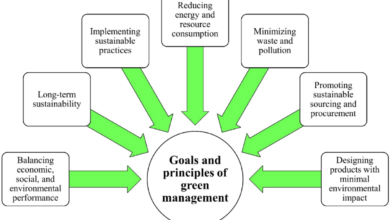Understanding Asbestos Surveys: A Comprehensive Guide

Asbestos, a group of naturally occurring fibrous minerals, was once hailed for its durability, heat resistance, and insulating properties. Widely used in construction, shipbuilding, automotive industries, and various other sectors, asbestos became ubiquitous in the mid-20th century. However, as scientific understanding advanced, the severe health risks associated with asbestos exposure became undeniable. Asbestos fibers, when inhaled, can cause serious diseases such as asbestosis, lung cancer, and mesothelioma. Consequently, regulatory bodies worldwide have implemented strict guidelines for managing and handling asbestos, making asbestos survey an essential process in ensuring safety and compliance.
What is an Asbestos Survey?
An asbestos survey is a systematic inspection carried out to identify and assess the presence of asbestos-containing materials (ACMs) in buildings and structures. These surveys are crucial for protecting workers, residents, and the public from the hazards of asbestos exposure. They provide essential information for planning renovations, demolitions, and maintenance activities, ensuring that ACMs are managed appropriately and safely.
Types of Asbestos Surveys
There are primarily three types of asbestos surveys, each serving a distinct purpose:
Management Survey:
A Management Survey is the standard survey required during the normal occupation and use of a building. Its purpose is to ensure that no one is harmed by the presence of asbestos and that the ACMs remain in good condition. It involves minor intrusive work and sampling to assess the condition of ACMs and manage any asbestos-related risks.
Refurbishment and Demolition Survey:
This type of survey is necessary before any refurbishment or demolition work is carried out. Unlike the Management Survey, it is fully intrusive and involves destructive inspection methods to locate all ACMs within the building or area affected by the refurbishment or demolition. The goal is to ensure that no ACMs are disturbed during the work, preventing asbestos fibers from becoming airborne.
Reinspection Survey:
Conducted periodically after the initial Management Survey, the Reinspection Survey monitors the condition of ACMs over time. It is crucial for ensuring that the management plan remains effective and that any changes in the condition of ACMs are identified and addressed promptly.
The Asbestos Survey Process
The process of conducting an asbestos survey involves several key steps:
Preparation:
The surveyor gathers background information about the building, including its age, construction materials, and any previous asbestos surveys. This information helps in planning the survey and identifying potential areas where asbestos may be present.
Visual Inspection:
The surveyor conducts a thorough visual inspection of the building, looking for any signs of ACMs. This includes examining walls, ceilings, floors, insulation, and other materials that may contain asbestos.
Sampling:
If potential ACMs are identified, the surveyor collects samples for laboratory analysis. Proper safety protocols are followed to minimize the risk of asbestos exposure during sampling.
Laboratory Analysis:
The collected samples are analyzed in a certified laboratory to confirm the presence of asbestos. The analysis determines the type of asbestos and its concentration in the material.
Reporting:
A detailed report is prepared, documenting the findings of the survey. The report includes information about the location, type, and condition of ACMs, as well as recommendations for managing and mitigating asbestos risks.
Importance of Asbestos Surveys
Asbestos surveys are critical for several reasons:
Health and Safety:
The primary reason for conducting asbestos surveys is to protect the health and safety of individuals. Identifying and managing ACMs prevents asbestos exposure, reducing the risk of developing asbestos-related diseases.
Regulatory Compliance:
Many countries have strict regulations regarding asbestos management. Conducting asbestos surveys ensures compliance with these regulations, avoiding legal penalties and liabilities.
Planning and Cost Management:
Asbestos surveys provide essential information for planning renovations, demolitions, and maintenance activities. Knowing the location and condition of ACMs helps in estimating costs and avoiding unexpected expenses related to asbestos remediation.
Risk Management:
Identifying and managing asbestos risks is crucial for maintaining a safe environment. Asbestos surveys help in assessing the risks associated with ACMs and implementing effective management plans to mitigate these risks.
Asbestos Surveyors: Qualifications and Competencies
Given the specialized nature of asbestos surveys, it is essential that they are conducted by qualified and competent surveyors. An asbestos surveyor should have:
Accreditation and Certification:
Surveyors must be accredited by relevant professional bodies and hold certifications that demonstrate their expertise in asbestos identification and management.
Training and Experience:
Proper training in asbestos surveying techniques and significant field experience are vital for ensuring accurate and reliable survey results.
Knowledge of Regulations:
Surveyors should be well-versed in local and international asbestos regulations, ensuring that their work complies with legal requirements.
Analytical Skills:
Strong analytical skills are necessary for interpreting laboratory results and assessing the condition of ACMs accurately.
Managing Asbestos in Buildings
Once an asbestos survey is completed, managing identified ACMs becomes the next critical step. Effective management involves several strategies:
Asbestos Management Plan (AMP):
An AMP outlines how identified ACMs will be managed and monitored over time. It includes procedures for regular inspections, maintenance activities, and emergency response in case of accidental disturbance of asbestos.
Encapsulation:
Encapsulation involves covering or sealing ACMs to prevent asbestos fibers from becoming airborne. This method is often used when ACMs are in good condition and not likely to be disturbed.
Removal:
In some cases, removing ACMs may be the best option, especially if they are damaged or located in high-risk areas. Asbestos removal should be carried out by licensed professionals following strict safety protocols.
Monitoring and Reinspection:
Regular monitoring and reinspection ensure that the condition of ACMs does not deteriorate over time. Any changes in the condition of ACMs are addressed promptly to prevent exposure risks.
Conclusion
Asbestos surveys are a fundamental aspect of managing asbestos risks in buildings and structures. By identifying and assessing the presence of ACMs, these surveys play a crucial role in protecting public health, ensuring regulatory compliance, and facilitating safe building practices. Whether for routine management, refurbishment, or demolition, conducting thorough asbestos surveys is essential for maintaining a safe environment and mitigating the hazards associated with asbestos exposure.



